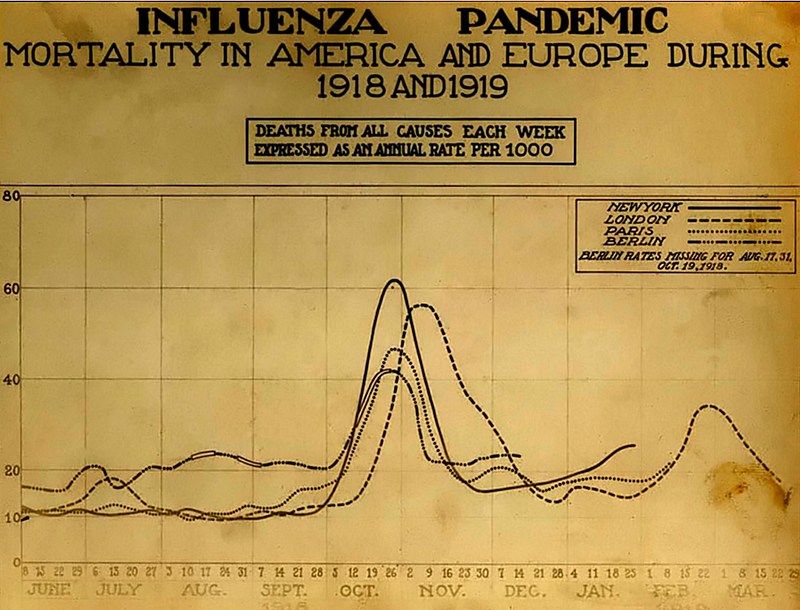Revisiting the Spanish Flu: New Insights on Mortality Risks
Written on
Chapter 1: Understanding the Spanish Flu
Historically, the Spanish flu was perceived as a pandemic that equally affected individuals of all ages. However, recent findings indicate that, much like the COVID-19 pandemic, factors such as pre-existing health conditions, social circumstances, and nutrition significantly influenced mortality rates.

[Photo: Otis Historical Archives, National Museum of Health and Medicine, Public domain, via Wikimedia Commons]
The Spanish flu, which ravaged the globe between 1918 and 1920, is recognized as one of history's most lethal epidemics. It is estimated that around 500 million people were infected, which represented over 30% of the world's population at that time. The H1N1 influenza A virus is thought to have caused the deaths of more than 50 million individuals.
Who Was Most at Risk?
In the latest edition of the scientific journal “PNAS,” researchers revisited the mortality rates associated with the Spanish flu. Their findings highlight a perplexing aspect of the pandemic: a disproportionately high death toll among young, healthy adults, which contradicts conventional notions of selective mortality.
Selective mortality refers to the phenomenon where individuals from lower socioeconomic backgrounds tend to die younger than their more affluent counterparts.
"The COVID-19 pandemic has showcased how various factors—social, environmental, and biological—can affect the likelihood of illness and mortality, even from a novel virus," wrote the authors, Amanda Wissler and Sharon N. DeWitte.

[Image: courtesy of the National Museum of Health and Medicine, Public domain, via Wikimedia Commons]
High-Risk Groups and Mortality Rates
“It is estimated that the 1918 flu pandemic resulted in roughly 50 million deaths globally. Many believed that the mortality risk for healthy individuals was equivalent to that of those already ill. Our study examined bioarchaeological data from approximately 369 individuals, focusing on age at death and skeletal changes,” the authors explained.
Their research involved analyzing the remains of individuals who passed away in the U.S. during the 1918 flu outbreak. The skeletal evidence suggested that individuals with uncertain health conditions and those suffering from poor nutrition were at a higher risk of dying from the Spanish flu, regardless of their age.

[Photo: Unnamed photographer for National Photo Company, Public domain, via Wikimedia Commons]
The Influence of Lifestyle and Socioeconomic Factors
Previous studies often overlooked the social and economic contexts of the victims, leading to unreliable mortality statistics from 1918 to 1920. The similar death rates among young and old individuals do not necessarily reflect the same risk of mortality from the virus itself. Instead, the mortality data failed to consider underlying health predispositions, revealing that social inequalities were more profound than previously recognized.
“Our findings indicate that those with weakened health were more likely to die during the pandemic compared to healthier individuals. This insight aids in understanding how diverse life experiences can affect vulnerability and mortality during pandemics,” the authors noted.
“During the COVID-19 crisis, we observed that marginalized populations were at greater risk for severe illness and death. I suspect the same dynamics were at play during the 1918 flu pandemic,” Amanda Wissler remarked in an interview with Live Science. The researchers emphasized that their findings, while not unexpected, challenge long-held beliefs about the Spanish flu pandemic.
A Cosmic Payload: NASA’s Bennu Asteroid Treasure Unveiled
Yesterday, NASA officially confirmed that the OSIRIS-REx mission was a success. Samples from the Bennu asteroid have…
Attention all readers!
As content creators on Medium.com, we face minimal compensation for our hard work. If you find value in my articles, please consider supporting me on my “Buy Me a Coffee” page. Your small contributions can make a big difference in fueling my passion for creating quality content. Thank you for your support!

